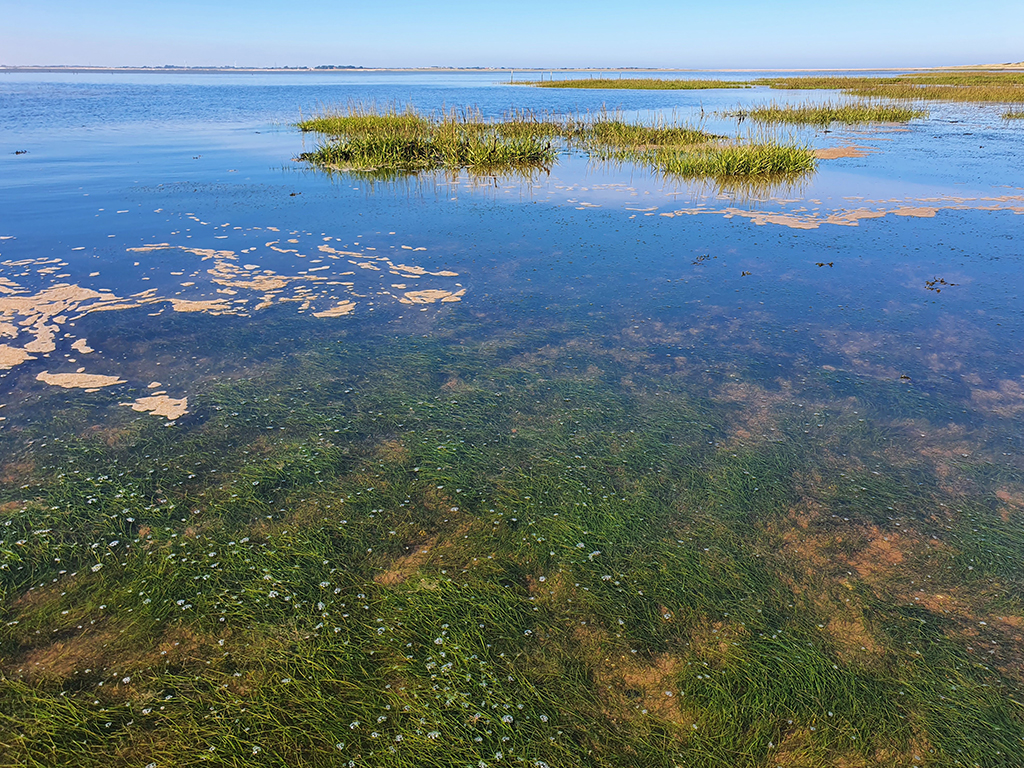Investing In Scotland's Future: Seagrass Restoration Through Targeted Bids

Table of Contents
The Ecological Importance of Seagrass Restoration in Scotland
Seagrass meadows are essential for the health of Scotland's marine ecosystems. Their restoration is crucial for several reasons:
Biodiversity Hotspots
- Rich Habitats: Seagrass meadows are incredibly biodiverse ecosystems, supporting a vast array of species. They provide nursery grounds, feeding areas, and shelter for countless marine organisms.
- Commercial Importance: These underwater meadows provide critical habitats for commercially important fish, shellfish, and marine mammals, including cod, crab, seahorses, and various bird species, supporting Scotland's fishing industry. Protecting seagrass helps maintain healthy fish stocks and contributes to the sustainability of seafood resources.
- Food Web Stability: Seagrass plays a vital role in maintaining the delicate balance of Scotland's marine food web. Its loss can trigger cascading effects throughout the ecosystem, impacting predator-prey relationships and overall biodiversity. The intricate web of life within seagrass beds is complex and vital for a thriving marine environment.
Carbon Sequestration and Climate Change Mitigation
- Effective Carbon Sinks: Seagrass is a highly effective carbon sink, capturing and storing significant amounts of atmospheric CO2—far more efficiently per unit area than terrestrial forests. This process, known as "blue carbon" sequestration, is critical in mitigating climate change.
- Climate Change Goals: Restoring seagrass meadows significantly contributes to Scotland's climate change goals by reducing atmospheric carbon dioxide levels. Investing in seagrass restoration is a tangible action towards achieving carbon neutrality.
- Blue Carbon Initiatives: "Blue carbon" initiatives are increasingly focusing on the role of coastal ecosystems like seagrass in climate change mitigation. Funding is becoming more readily available for projects demonstrating a clear understanding of carbon sequestration potential. Studies estimate that Scottish seagrass meadows could sequester significant amounts of carbon annually, providing invaluable climate mitigation benefits.
Funding Opportunities and Targeted Bids for Seagrass Restoration Projects
Securing funding is crucial for successful seagrass restoration projects. Several avenues exist for securing the necessary financial support:
Identifying Relevant Funding Streams
- Government Grants: Explore grants and funding programs from the Scottish Government, specifically those focused on marine conservation and restoration. The Scottish Government's environmental funding programs often include initiatives related to coastal habitat restoration.
- EU Initiatives: Investigate relevant EU initiatives supporting marine conservation and restoration projects within Scotland and the wider UK. Look for funding opportunities related to biodiversity, climate change mitigation, and sustainable development.
- Environmental Charities: Several environmental charities in Scotland and the UK provide grants for marine conservation projects. Research organizations such as the Marine Conservation Society, WWF Scotland, and others for potential funding opportunities. Many offer grants specifically for seagrass restoration.
Crafting a Winning Bid
- Compelling Proposal: Develop a compelling project proposal that clearly outlines the ecological, economic, and social benefits of your seagrass restoration project. Use quantifiable data to demonstrate the impact.
- Feasibility and Sustainability: Demonstrate a clear understanding of the project's feasibility and long-term sustainability. This includes detailing the chosen restoration methods, monitoring strategies, and potential challenges.
- Detailed Budget and Timeline: Include detailed budget breakdowns, realistic timelines, and comprehensive monitoring plans. Clear and transparent financial reporting is essential for securing funding.
- Community Engagement: Highlight community involvement and stakeholder engagement in your project proposal. Demonstrating local support and collaboration strengthens your bid.
Successful Seagrass Restoration Techniques in Scotland
Several effective techniques are available for seagrass restoration, each with its own advantages and challenges within the Scottish context:
Seed Collection and Transplantation
- Process: This involves collecting seagrass seeds from healthy meadows and transplanting them to degraded areas. This is often combined with habitat improvement techniques.
- Challenges and Successes: This method can be highly effective but faces challenges, including seed viability, suitable substrate conditions, and grazing by herbivores. Recent projects in Scotland have demonstrated the effectiveness of targeted seed collection and careful transplantation.
Habitat Creation and Enhancement
- Habitat Suitability: Creating suitable habitats involves addressing water quality issues, reducing sediment loads, and providing appropriate substrate conditions for seagrass growth. This includes measures to manage nutrient runoff and pollution.
- Degraded Bed Improvement: Methods to improve existing degraded seagrass beds include removing excess sediment, controlling invasive species, and reducing the impact of human activities such as anchoring.
Monitoring and Evaluation
- Ongoing Assessment: Ongoing monitoring is crucial for assessing project success and making adjustments as needed. This includes regular surveys of seagrass growth, biodiversity, and water quality.
- Data Collection: Employ appropriate methods for tracking seagrass growth, assessing biodiversity, and monitoring the effectiveness of the restoration techniques. This data will inform future restoration efforts.
- Adaptive Management: Adapt strategies based on monitoring results to optimize project effectiveness. Regular monitoring allows for adaptive management strategies, improving project success rates over time.
Conclusion
Investing in Seagrass Restoration in Scotland is not just an ecological imperative; it's a strategic investment in a healthier, more resilient future. By securing targeted bids and implementing effective restoration techniques, we can revitalize these vital habitats, safeguard biodiversity, mitigate climate change, and create a lasting legacy for generations to come. Don't hesitate – explore the funding opportunities available and contribute to the vital work of seagrass restoration in Scotland today. Learn more about available grants and how to submit your bid for seagrass restoration projects now!

Featured Posts
-
 Kentucky Derby 2025 Your Guide To Online Streaming Pricing And Availability
May 04, 2025
Kentucky Derby 2025 Your Guide To Online Streaming Pricing And Availability
May 04, 2025 -
 Britains Got Talent Addressing The Issues Surrounding Teddy Magic
May 04, 2025
Britains Got Talent Addressing The Issues Surrounding Teddy Magic
May 04, 2025 -
 Ufc 314 Volkanovski Vs Lopes Fight Card Breakdown
May 04, 2025
Ufc 314 Volkanovski Vs Lopes Fight Card Breakdown
May 04, 2025 -
 Greg Olsens Third Emmy Nomination Outshining Tom Brady
May 04, 2025
Greg Olsens Third Emmy Nomination Outshining Tom Brady
May 04, 2025 -
 Bianca Censori And Kanye West Working On Their Marriage After Discussions
May 04, 2025
Bianca Censori And Kanye West Working On Their Marriage After Discussions
May 04, 2025
